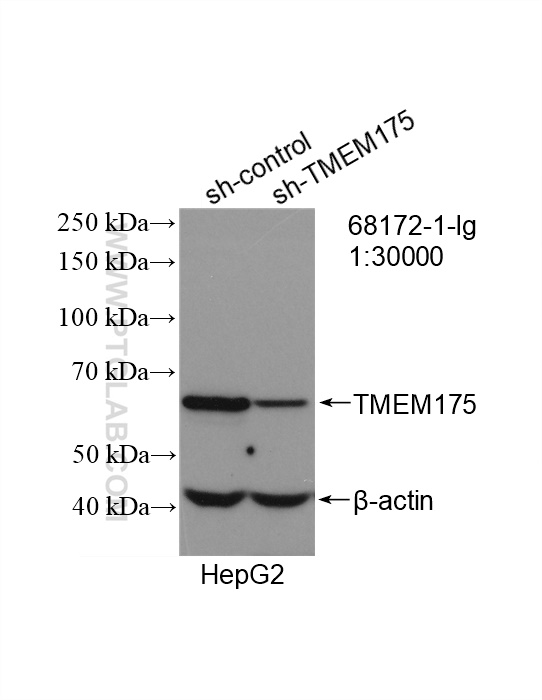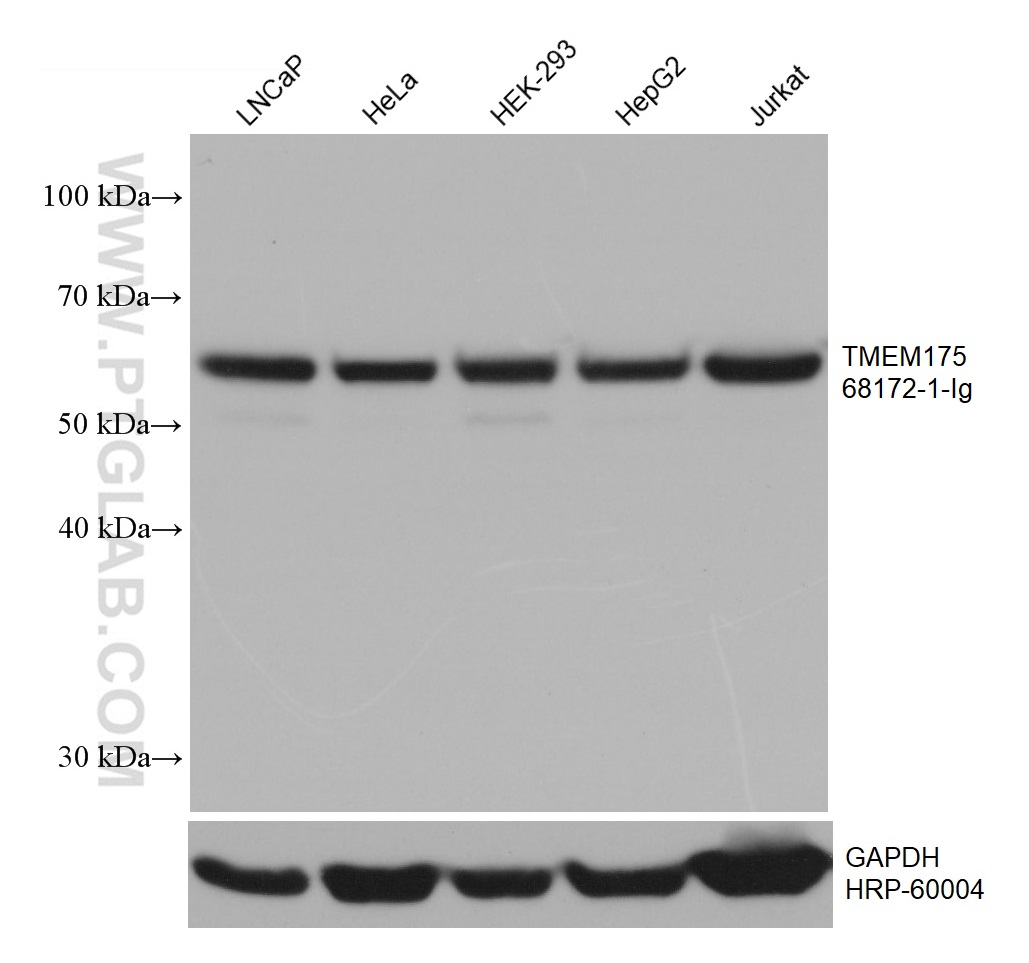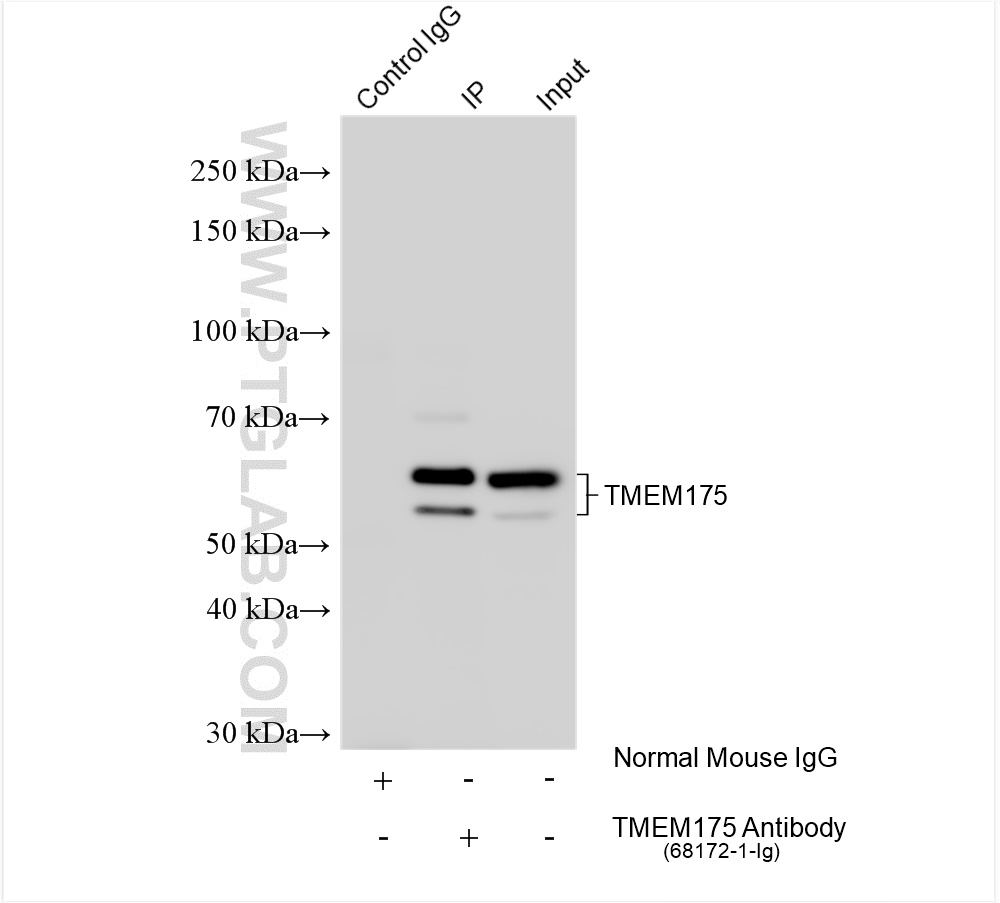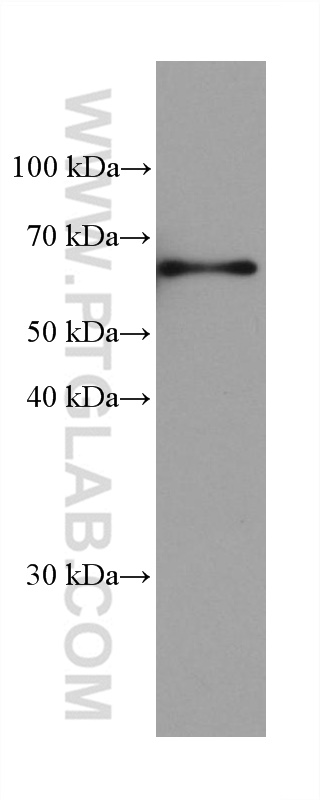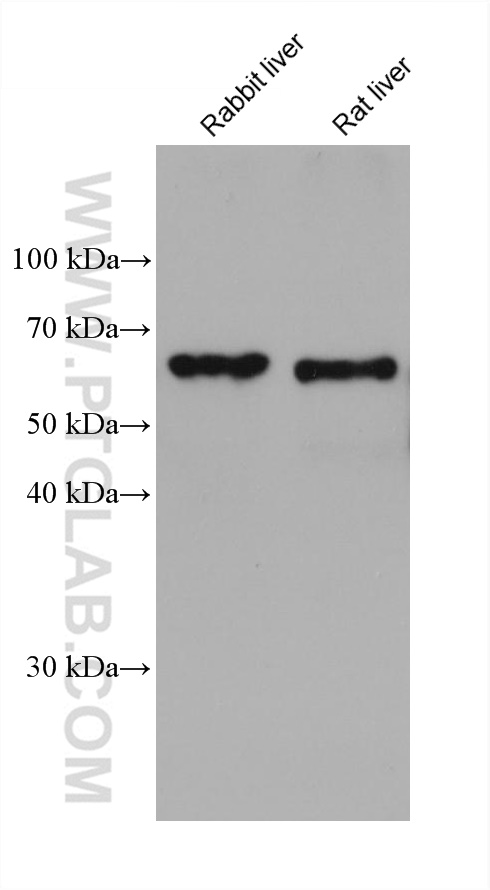验证数据展示
经过测试的应用
| Positive WB detected in | LNCaP cells, pig liver tissue, rabbit liver tissue, HepG2 cells, mouse brain tissue, rat liver tissue, HeLa cells, HEK-293 cells, Jurkat cells |
| Positive IP detected in | mouse brain tissue |
推荐稀释比
| 应用 | 推荐稀释比 |
|---|---|
| Western Blot (WB) | WB : 1:5000-1:50000 |
| Immunoprecipitation (IP) | IP : 0.5-4.0 ug for 1.0-3.0 mg of total protein lysate |
| It is recommended that this reagent should be titrated in each testing system to obtain optimal results. | |
| Sample-dependent, Check data in validation data gallery. | |
产品信息
68172-1-Ig targets TMEM175 in WB, IP, ELISA applications and shows reactivity with human, mouse, rat, pig, rabbit samples.
| 经测试应用 | WB, IP, ELISA Application Description |
| 经测试反应性 | human, mouse, rat, pig, rabbit |
| 免疫原 |
CatNo: Ag13890 Product name: Recombinant human TMEM175 protein Source: e coli.-derived, PGEX-4T Tag: GST Domain: 222-313 aa of BC005158 Sequence: YVSKVTGWCRDRLLGHREPSAHPVEVFSFDLHEPLSKERVEAFSDGVYAIVATLLILDICEDNVPDPKDVKERFSGSLVAALSATGPRFLAY 种属同源性预测 |
| 宿主/亚型 | Mouse / IgG1 |
| 抗体类别 | Monoclonal |
| 产品类型 | Antibody |
| 全称 | transmembrane protein 175 |
| 别名 | 1E7E1, hTMEM175, Transmembrane protein 175 |
| 计算分子量 | 504 aa, 56 kDa |
| 观测分子量 | 55-60 kDa |
| GenBank蛋白编号 | BC005158 |
| 基因名称 | TMEM175 |
| Gene ID (NCBI) | 84286 |
| RRID | AB_2923687 |
| 偶联类型 | Unconjugated |
| 形式 | Liquid |
| 纯化方式 | Protein G purification |
| UNIPROT ID | Q9BSA9 |
| 储存缓冲液 | PBS with 0.02% sodium azide and 50% glycerol, pH 7.3. |
| 储存条件 | Store at -20°C. Stable for one year after shipment. Aliquoting is unnecessary for -20oC storage. |
背景介绍
TMEM175 has two repeats of 6-transmembrane-spanning segments and has no GYG K+ channel sequence signature-containing, pore-forming P loop. Lysosomes lacking TMEM175 exhibit no K+conductance, have a markedly depolarized ΔΨ and little sensitivity to changes in [K+], and have compromised luminal pH stability and abnormal fusion with autophagosomes during autophagy. TMEM175 comprises a K+ channel that underlies the molecular mechanism of lysosomal K+ permeability.
实验方案
| Product Specific Protocols | |
|---|---|
| IP protocol for TMEM175 antibody 68172-1-Ig | Download protocol |
| WB protocol for TMEM175 antibody 68172-1-Ig | Download protocol |
| Standard Protocols | |
|---|---|
| Click here to view our Standard Protocols |

